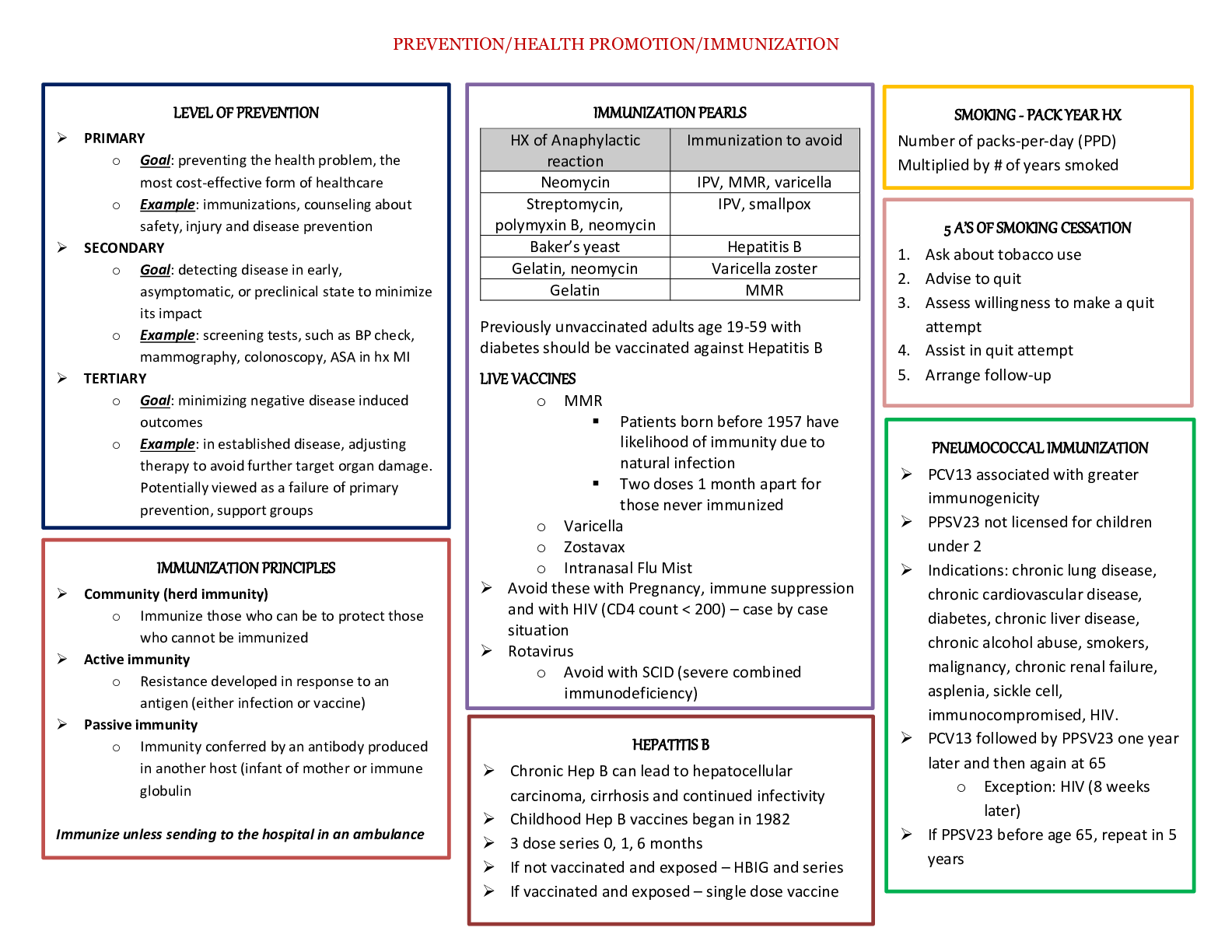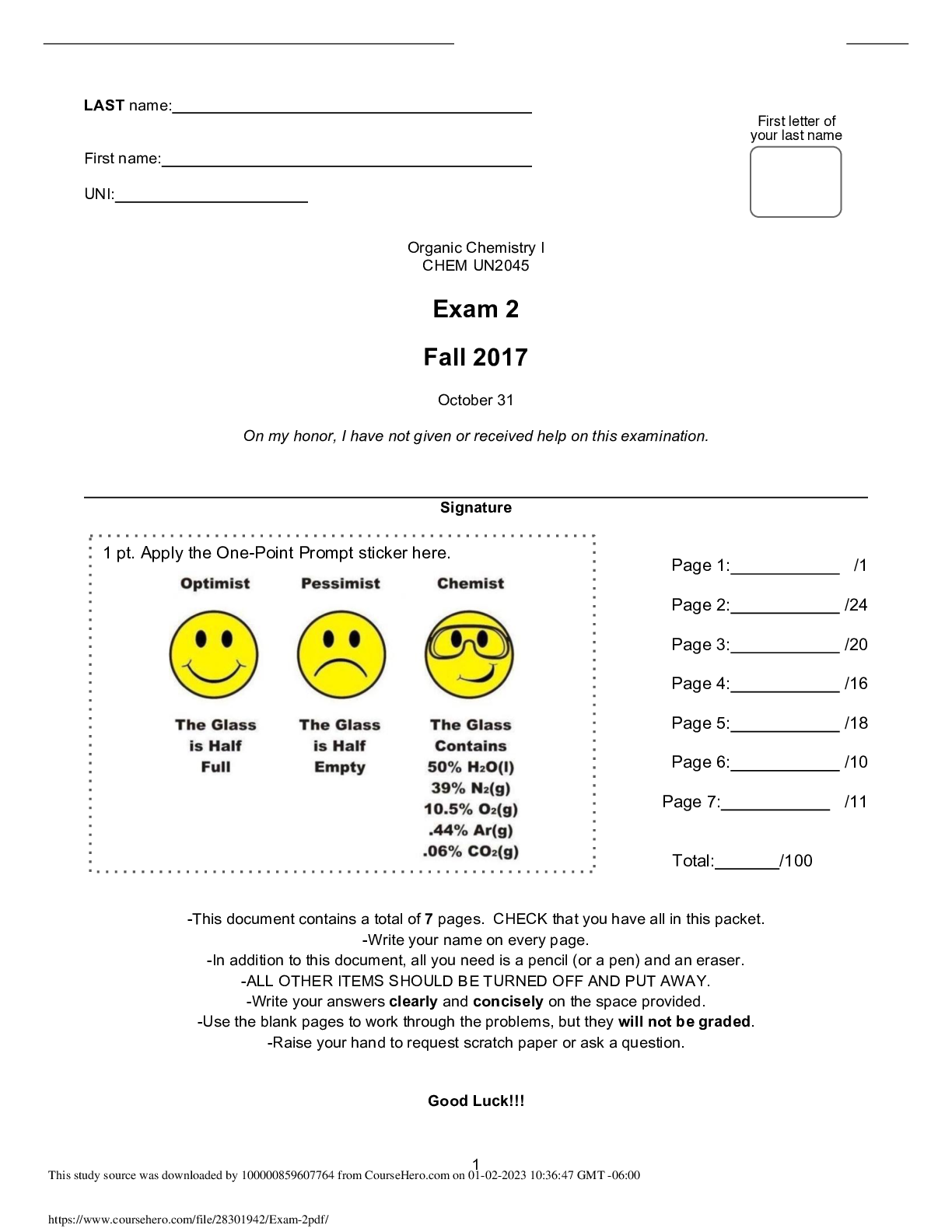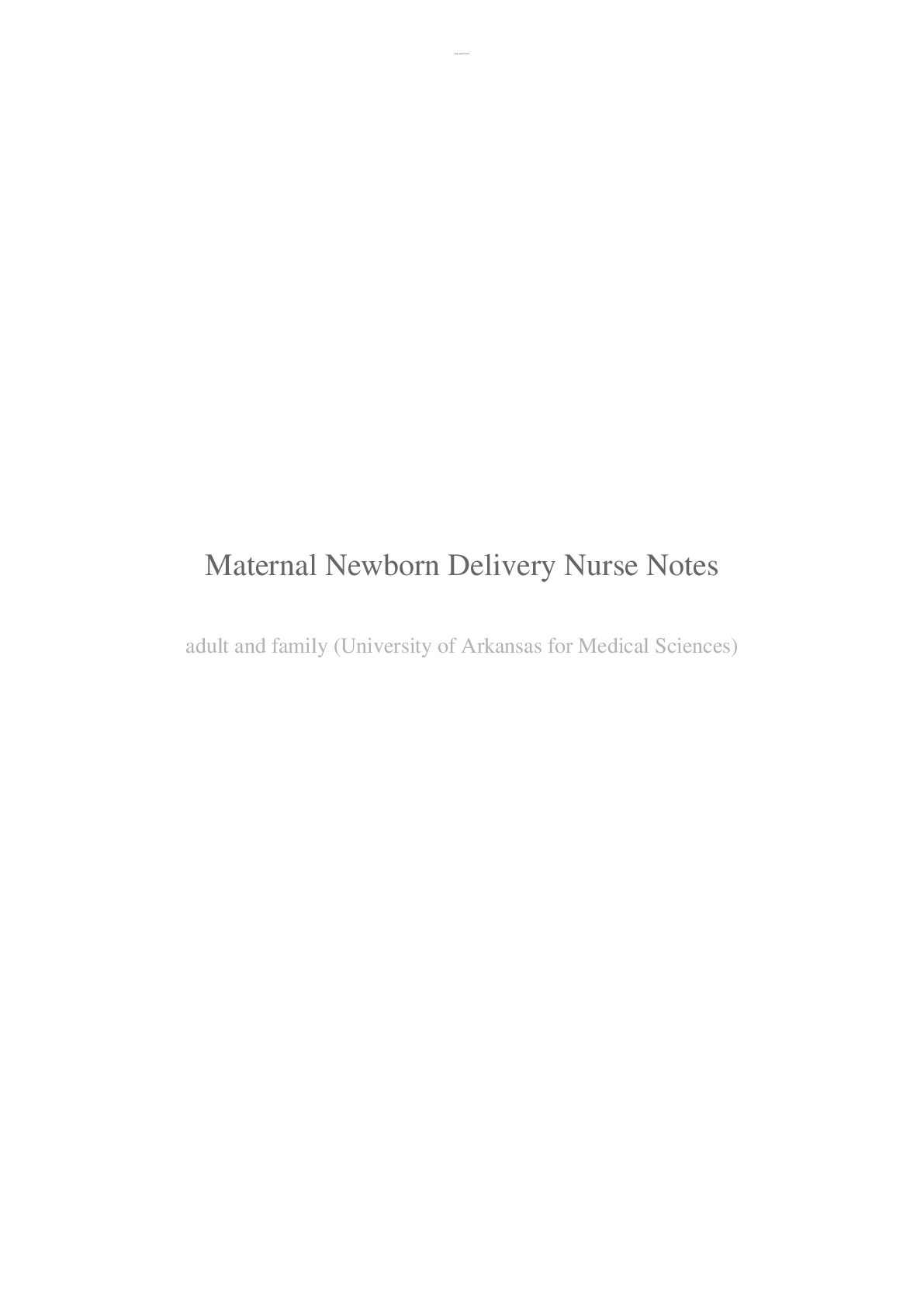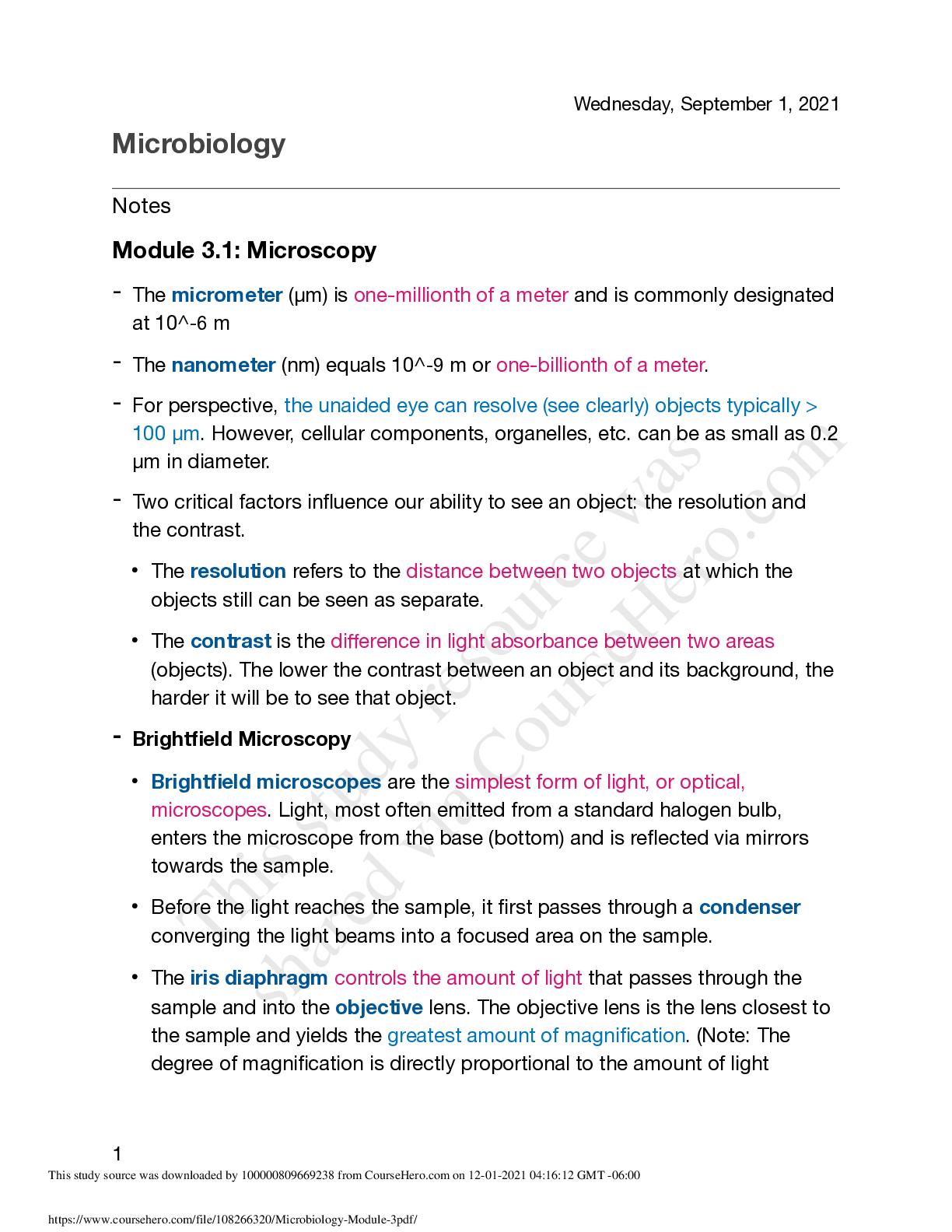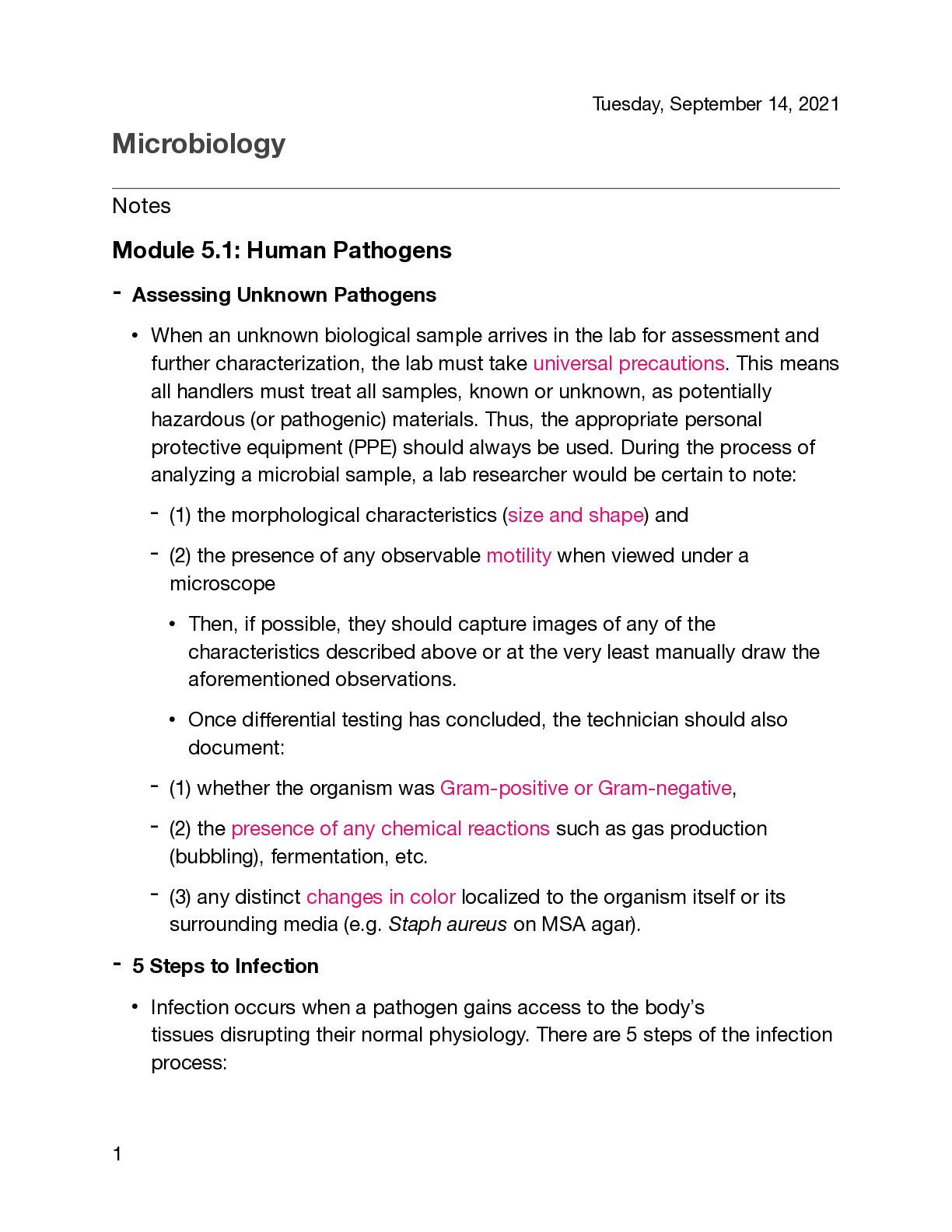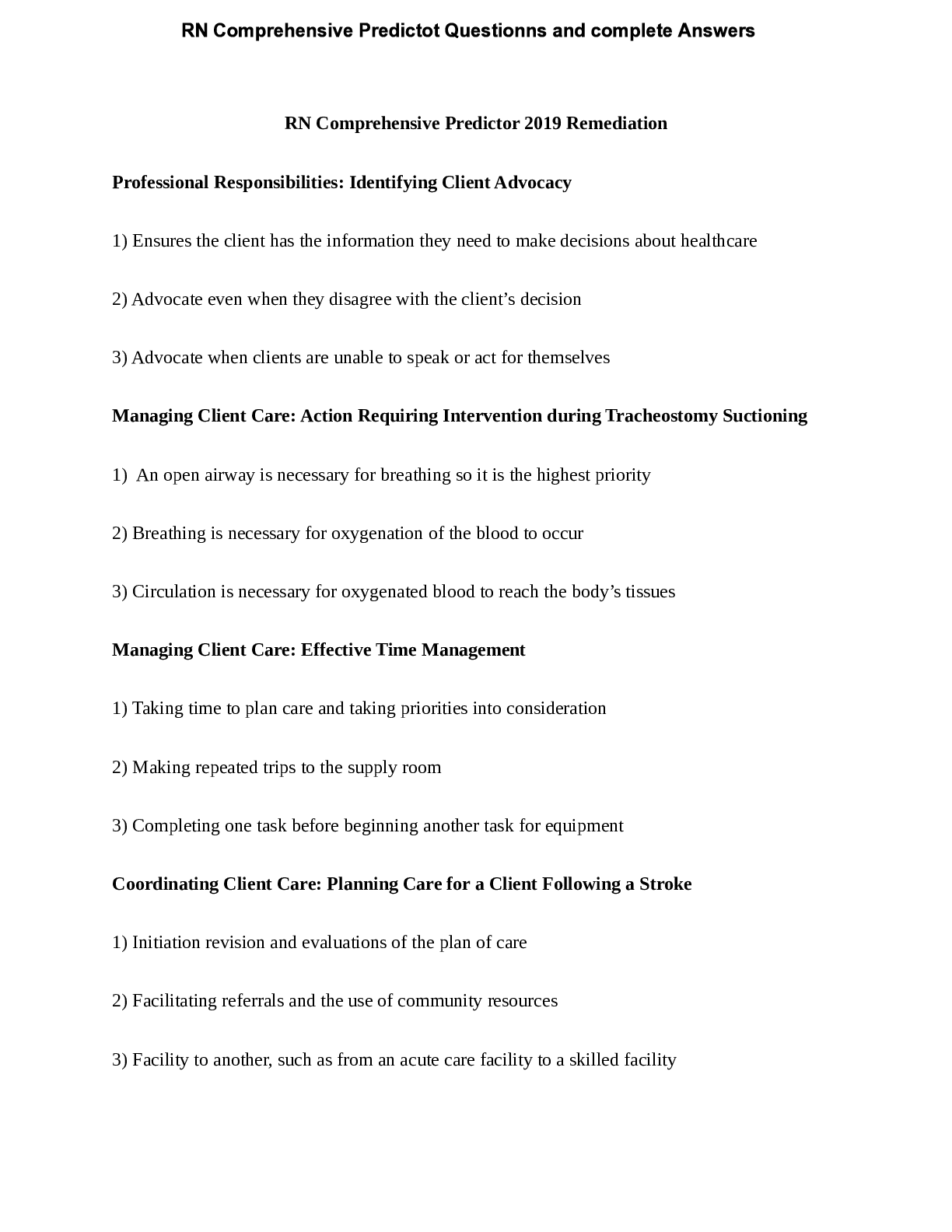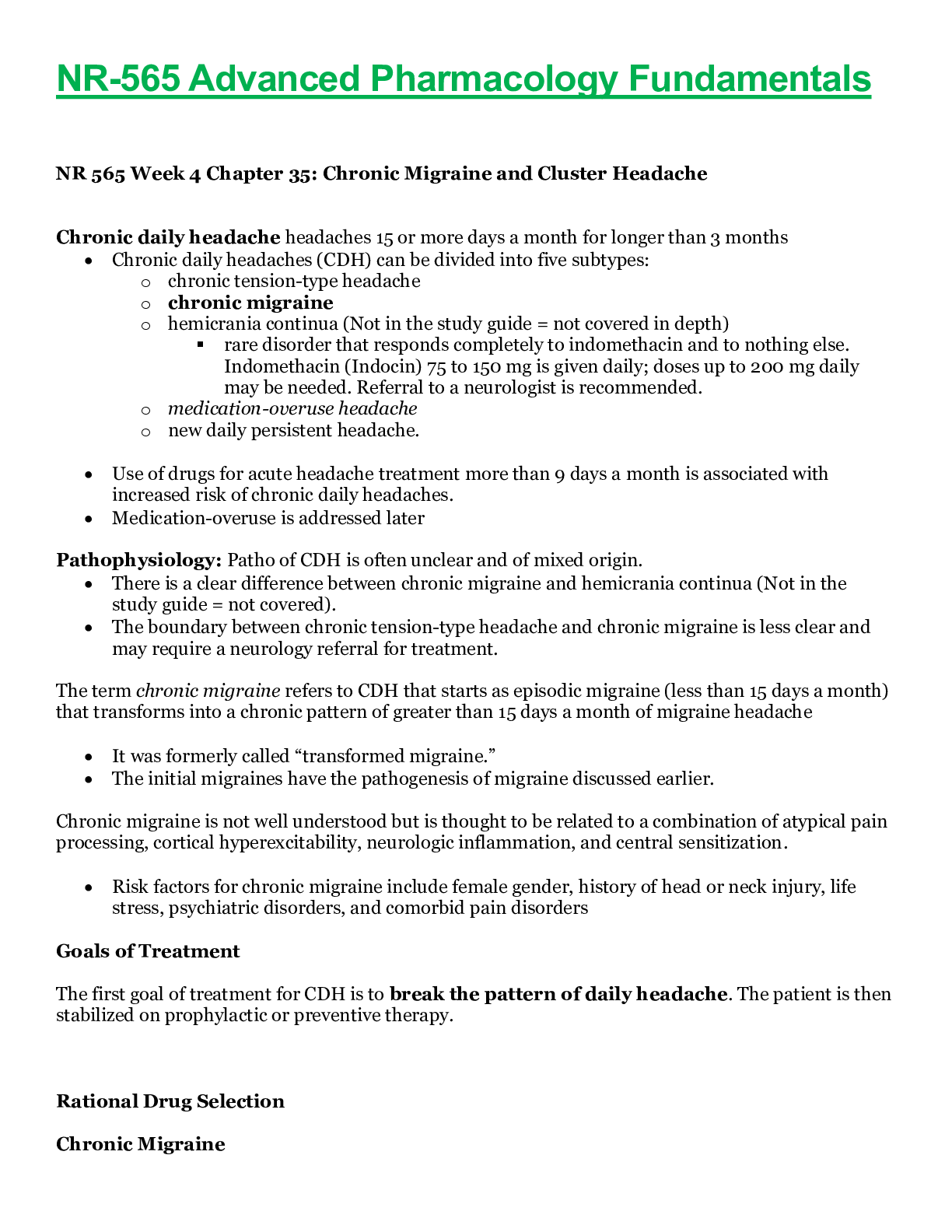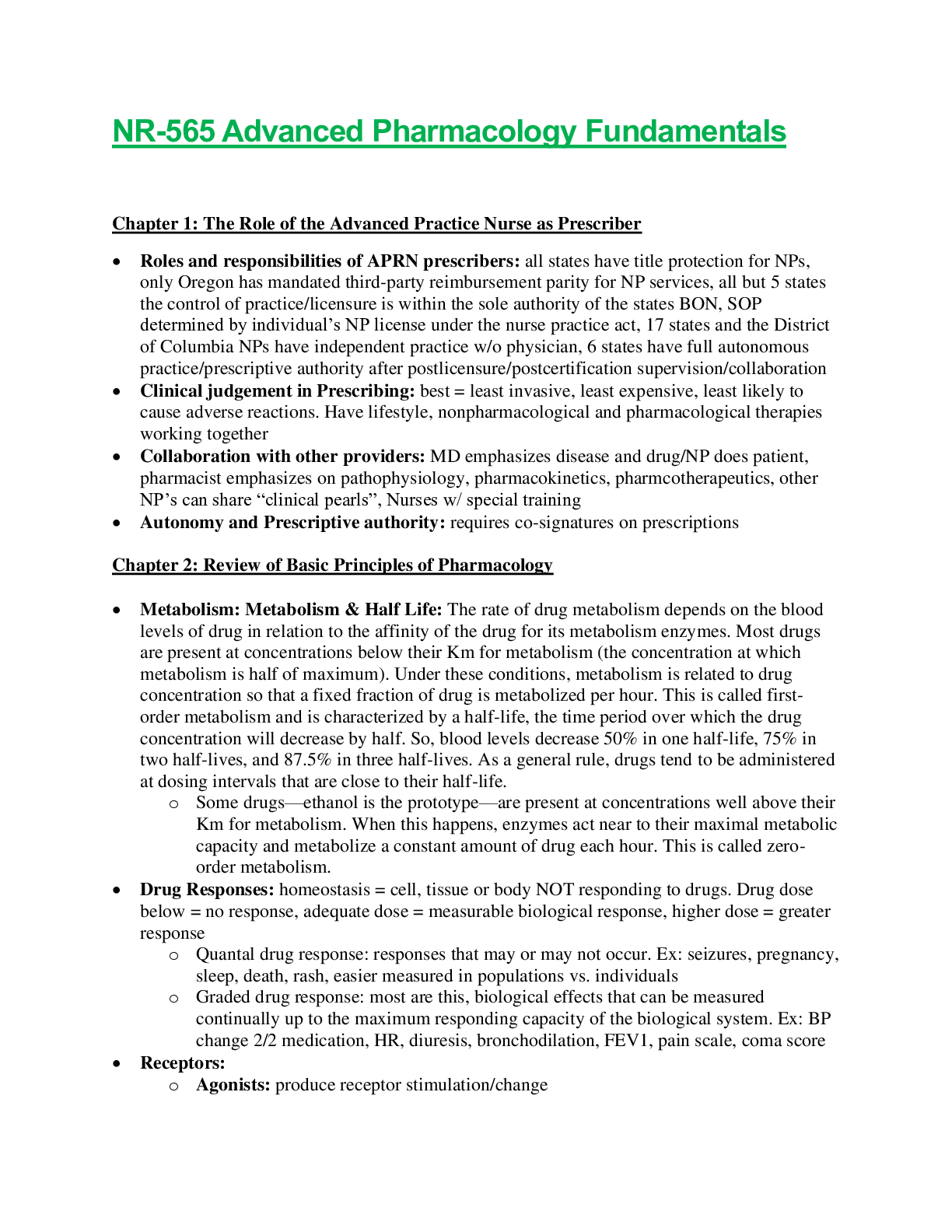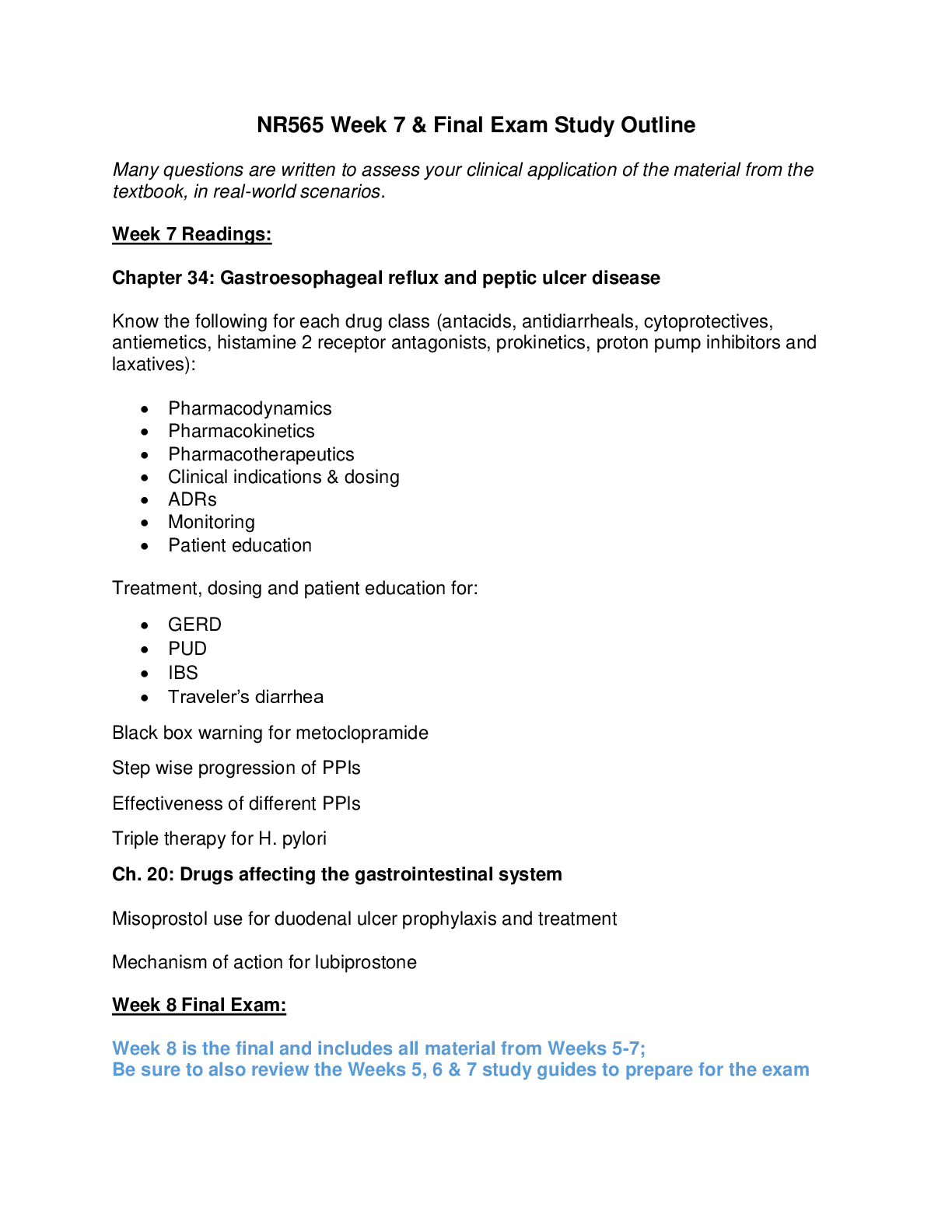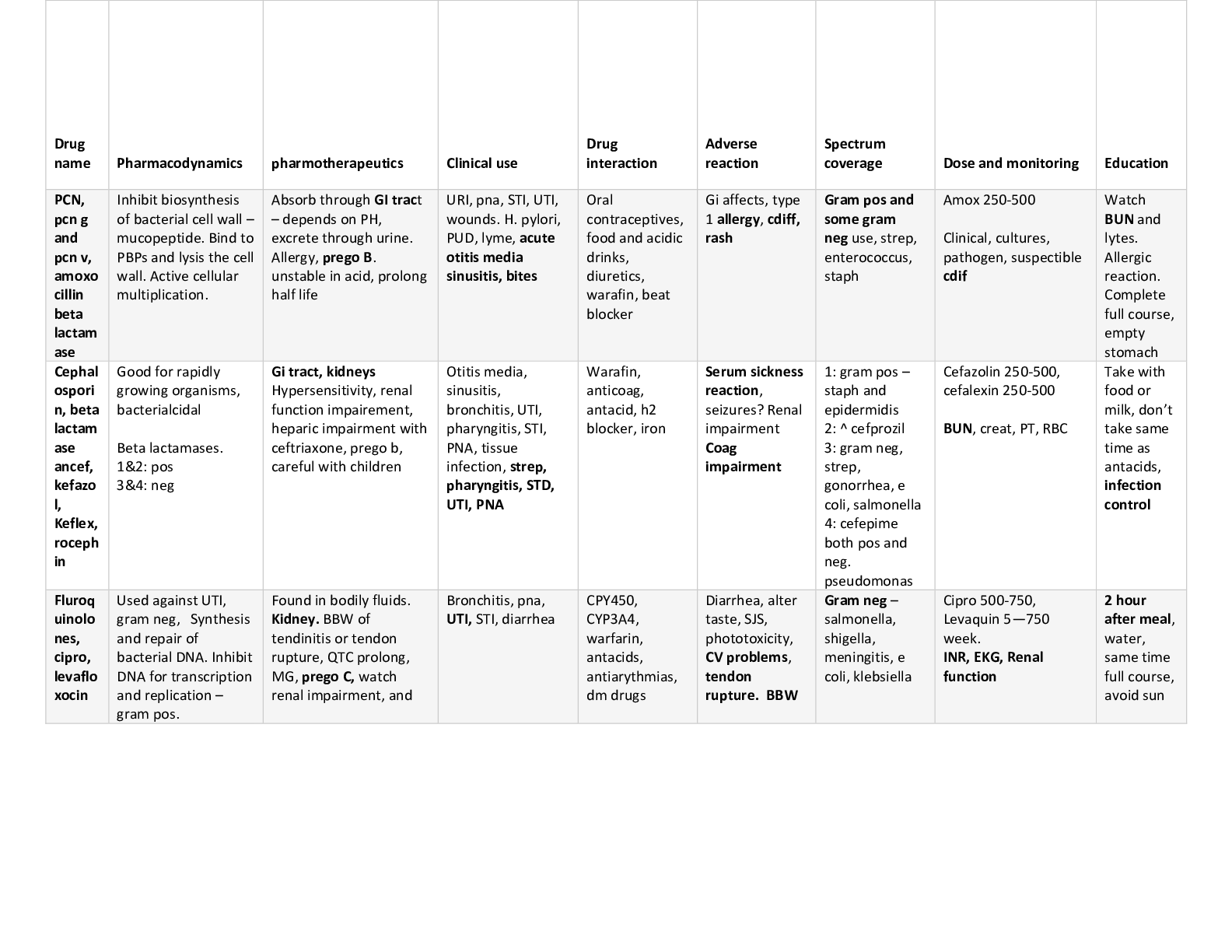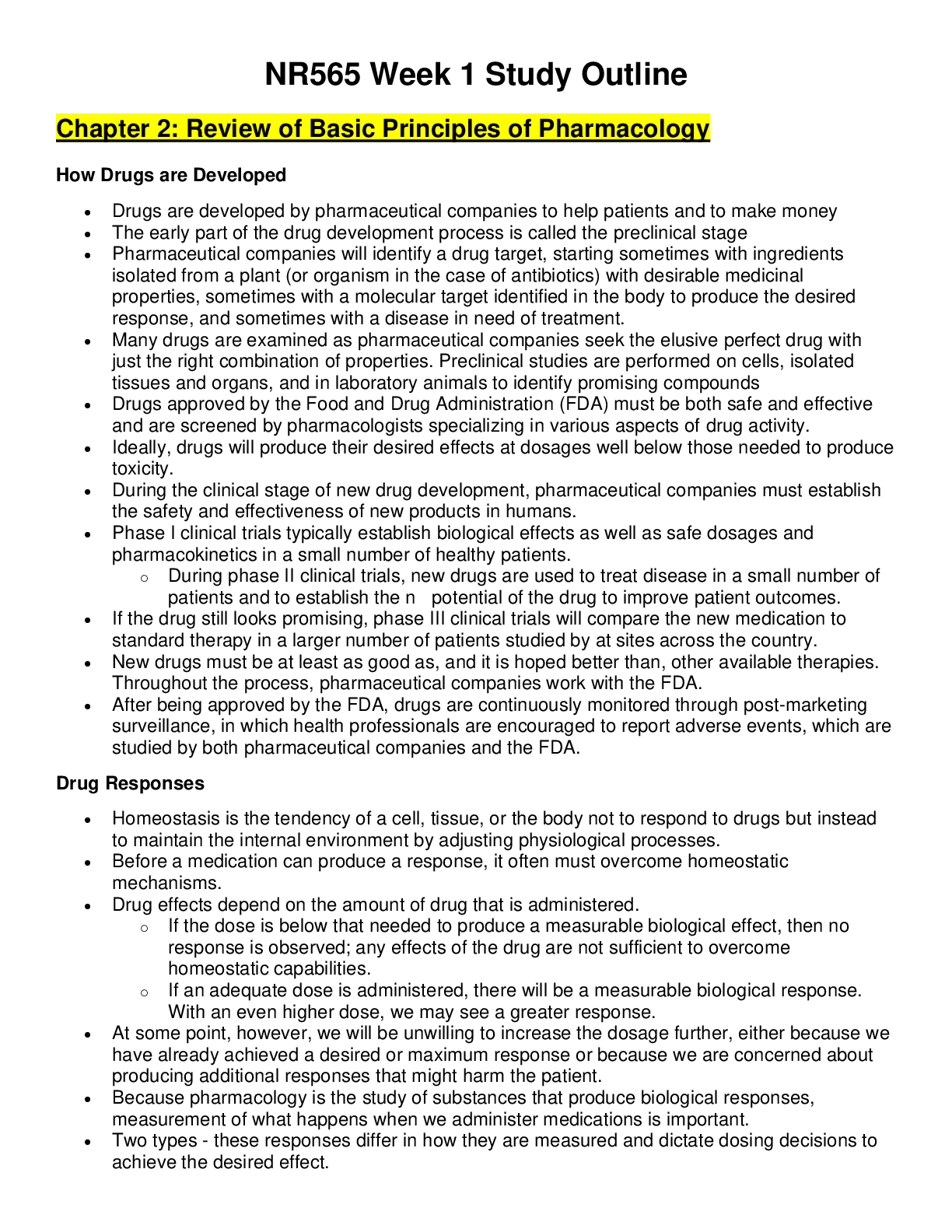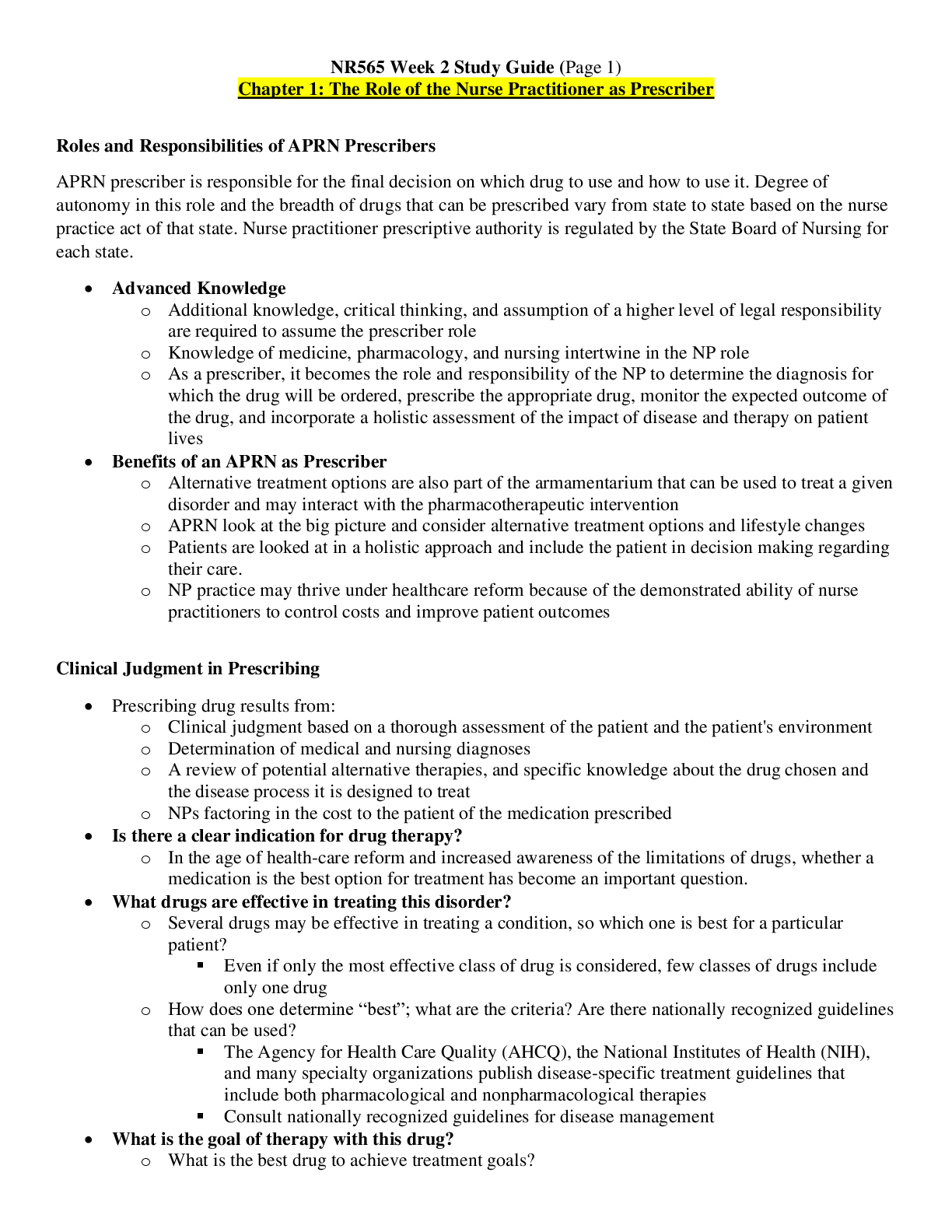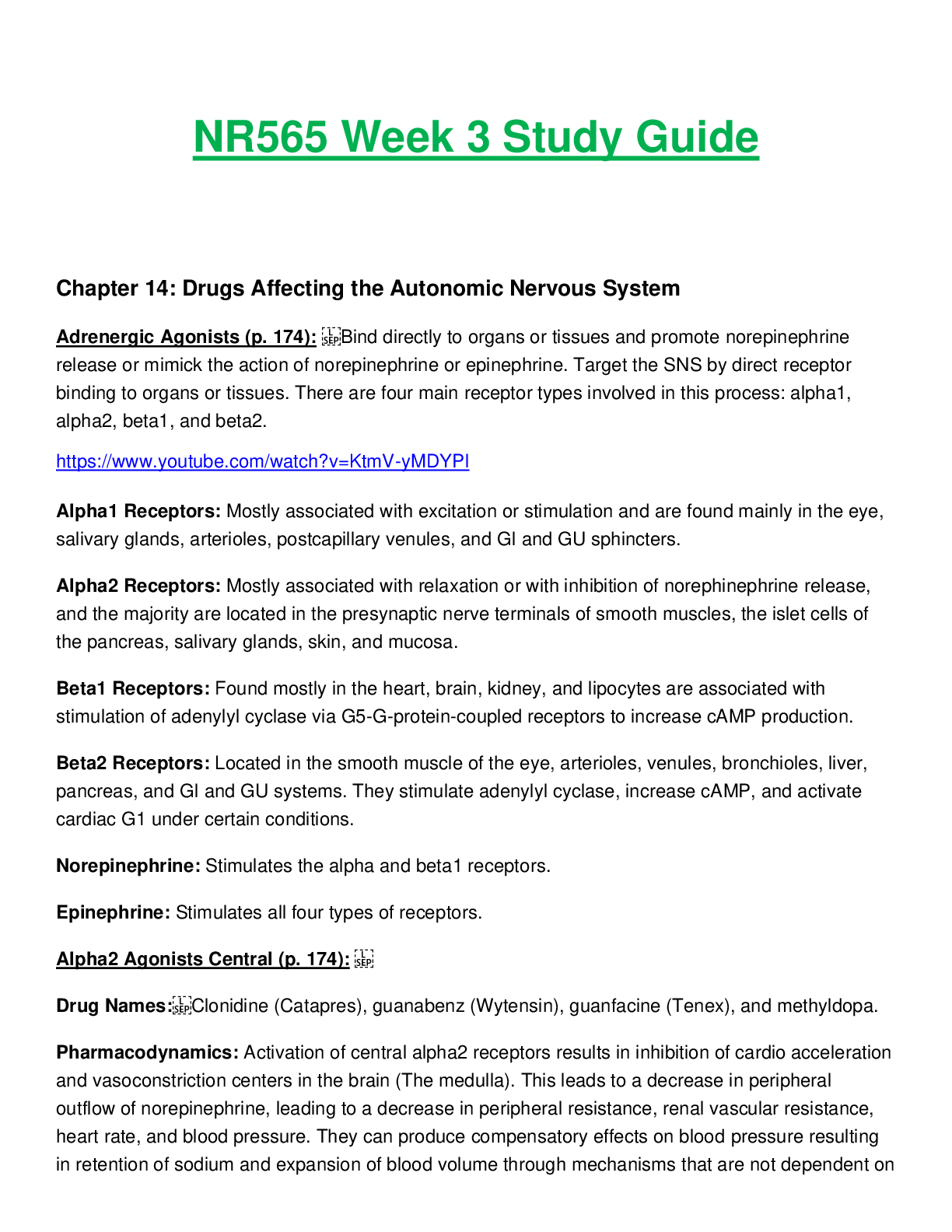*NURSING > STUDY GUIDE > NR565 / NR 565: Advanced Pharmacology Midterm Study Guide. Download To Score A (All)
NR565 / NR 565: Advanced Pharmacology Midterm Study Guide. Download To Score A
Document Content and Description Below
NR565 / NR 565: Advanced Pharmacology Midterm Study Guide. Download To Score A.Chapter 1: The Role of the Advanced Practice Nurse as Prescriber • Roles and responsibilities of APRN prescribers: all... states have title protection for NPs, only Oregon has mandated third-party reimbursement parity for NP services, all but 5 states the control of practice/licensure is within the sole authority of the states BON, SOP determined by individual’s NP license under the nurse practice act, 17 states and the District of Columbia NPs have independent practice w/o physician, 6 states have full autonomous practice/prescriptive authority after postlicensure/postcertification supervision/collaboration • Clinical judgement in Prescribing: best = least invasive, least expensive, least likely to cause adverse reactions. Have lifestyle, nonpharmacological and pharmacological therapies working together • Collaboration with other providers: MD emphasizes disease and drug/NP does patient, pharmacist emphasizes on pathophysiology, pharmacokinetics, pharmcotherapeutics, other NP’s can share “clinical pearls”, Nurses w/ special training • Autonomy and Prescriptive authority: requires co-signatures on prescriptions Chapter 2: Review of Basic Principles of Pharmacology • Metabolism: Metabolism & Half Life: The rate of drug metabolism depends on the blood levels of drug in relation to the affinity of the drug for its metabolism enzymes. Most drugs are present at concentrations below their Km for metabolism (the concentration at which metabolism is half of maximum). Under these conditions, metabolism is related to drug concentration so that a fixed fraction of drug is metabolized per hour. This is called first-order metabolism and is characterized by a half-life, the time period over which the drug concentration will decrease by half. So, blood levels decrease 50% in one half-life, 75% in two half-lives, and 87.5% in three half-lives. As a general rule, drugs tend to be administered at dosing intervals that are close to their half-life. o Some drugs—ethanol is the prototype—are present at concentrations well above their Km for metabolism. When this happens, enzymes act near to their maximal metabolic capacity and metabolize a constant amount of drug each hour. This is called zero-order metabolism. • Drug Responses: homeostasis = cell, tissue or body NOT responding to drugs. Drug dose below = no response, adequate dose = measurable biological response, higher dose = greater response o Quantal drug response: responses that may or may not occur. Ex: seizures, pregnancy, sleep, death, rash, easier measured in populations vs. individuals o Graded drug response: most are this, biological effects that can be measured continually up to the maximum responding capacity of the biological system. Ex: BP change 2/2 medication, HR, diuresis, bronchodilation, FEV1, pain scale, coma score • Receptors: o Agonists: produce receptor stimulation/change o Antagonists: drugs that occupy receptors without stimulating them, produce NO response • Pharmacokinetics: o Absorption: produces biological effect, route of administration affects absorption o Distribution: process of drugs moving throughout the body, throughout the bloodstream and passive diffusion o Protein Binding: drugs bind to a variety of proteins in the blood, often called plasma proteins, helping normalize concentrations in the body, ex: albumin o Metabolism (including first-pass and Phase I and II): metabolism = changing one chemical into another, creating or using energy, occurs in liver first-pass: metabolism by the liver after oral administration phase I: nonsynthetic reactions: involve oxidation, reduction, hydrolysis reactions, preparing drug molecule for further metabolism, most rapidly eliminated phase II: synthetic or conjugation reactions: drugs are metabolized, something is added ot the drug to synthesize a new compound, • Cytochrome P450 metabolism: aka CYP P450, “family” of enzymes that metabolizes drugs, drug may undergo several biological transformations before being excreted, provide a framework for understanding metabolism & drug interactions w/ meds and food • Excretion: o Renal: kidney primary organ for excretion of most drugs, want water-soluble to easily be removed in the urine, excretes waste products, maintains fluid/electrolyte balance, assessed by creatinine, height, weight, age, gender o Biliary: liver secretes about a liter of bile each day, drugs enter bile, excreted into intestinal tract when bile is released to digest food, o Other (e.g. for volatile drugs): pulmonary excretion for volatile material, important for anesthetic gases e.g. nitrous oxide; ethanol excreted when we breathe, volatile ketones in poorly controlled diabetics (smell of ketones on breath) [Show More]
Last updated: 1 year ago
Preview 1 out of 11 pages
Instant download

Buy this document to get the full access instantly
Instant Download Access after purchase
Add to cartInstant download
Reviews( 0 )
Document information
Connected school, study & course
About the document
Uploaded On
Feb 15, 2021
Number of pages
11
Written in
Additional information
This document has been written for:
Uploaded
Feb 15, 2021
Downloads
0
Views
29


